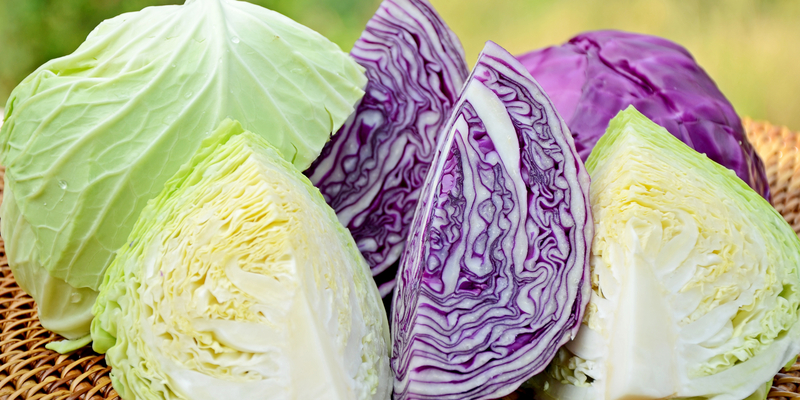The Health Benefits of Cabbage
Strolling through the aisles at your local market? Have you thought about including cabbage in the week’s shop? In this post, we talk about the health benefits of cabbage and how you can get the most out of this nutritious vegetable.
Origin Story
Due to the confusions of what a cabbage is and the linguistic overlap between “choy” (Asia) and “cruciferous” (Europe) it’s complicated to answer the true origins of the vegetable. However, most plant researchers can trace the direct ancestor of the cabbages to the wild cabbages of Europe. But note, they looked nothing like the cabbages we know of today. The original forms of this plant were non-head-forming and much more closely resembled cruciferous vegetables like kale or collards.
Present Conditions
Cabbage is available all year round and can be eaten raw or cooked. There are many varieties and types of cabbage, but in Australia we mostly see the green or red kind. Red cabbages are round and have a slightly peppery flavour; green cabbages can also be round but also can be found in elongated shapes. Made up of 90% water, the cabbage is very low in kilojoules but packed full of fibre, Vitamin C and beta carotene.
Healthy Snapshot
- Detoxifying Enzymes – contains the highest amount of some of the most powerful antioxidants found in cruciferous vegetables. Research has shown these compounds protect against breast, colon and prostate cancers (among other types of cancer).
- Lowers LDL or “Bad” cholesterol levels – which can build up and cause heart disease.
- Prevents constipation – The fibre and water content helps maintain a healthy digestive tract. Eating adequate fibre promotes regularity, which is crucial for the daily excretion of toxins through the bile and stool.
- Anti-inflammatory – the anthocyanins found in red cabbage are well-documented anti-inflammatory compounds and make red cabbage a standout anti-inflammatory food for this reason. However, all types of cabbage contain significant amount of polyphenols that provide anti-inflammatory benefits.
Carry-on Cabbage – Getting the most out of your cabbage
Selection: Cabbages should feel slightly heavy for their size. Make sure the leaves are tight and firm as loose leaves usually denote an older cabbage. In loose-leafed varieties, such as the savoy or wombok, look for crisp green leaves. Green and red cabbages should have shiny, compact leaves. Avoid cabbages with any discolouration or blemishes.
Storing: Keep whole cabbages in a cool, well-ventilated place and they should last for two weeks. If you slice the cabbage, cover parts in plastic wrap and store in the crisper section of the fridge, this should keep for up to two days.
Preparing: Wash whole cabbage head under running water or remove the thick fibrous outer leaves and cut the cabbage into pieces and then wash under running water. Wash cabbage just prior to eating or cooking in order to help decrease the rate of deterioration. To cut cabbage into smaller pieces, first quarter it and remove the core.
Cooking: Include your cabbage in stir-fries or casseroles. You can also use cabbage in salads and soups by shredding the outer leaves. Overcooking cabbage can intensify its pungent odour, so it’s best recommended to lightly saute, boil or stir-fry to achieve best results.
